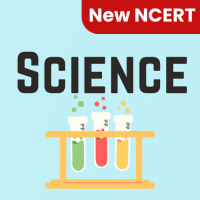Class 6 Exam > Class 6 Questions > Identify the part of the plant that is primar...
Start Learning for Free
Identify the part of the plant that is primarily responsible for reproduction.
- a)Leaf
- b)Stem
- c)Root
- d)Flower
Correct answer is option 'D'. Can you explain this answer?
Most Upvoted Answer
Identify the part of the plant that is primarily responsible for repro...
Understanding Plant Reproduction
The flower is the primary reproductive structure in flowering plants (angiosperms). Its complex structure facilitates various processes crucial for reproduction.
Key Functions of the Flower
- Attraction of Pollinators:
Flowers are often brightly colored and fragrant, attracting insects and animals, which help in the process of pollination.
- Pollination:
This is the transfer of pollen from the male part (anther) to the female part (stigma) of the flower. It can occur via wind, water, or animals.
- Fertilization:
After pollination, pollen travels down the style to the ovary, where fertilization occurs. This leads to the formation of seeds.
- Seed Production:
Once fertilized, the ovule develops into a seed, and the ovary matures into a fruit, which helps in seed dispersal.
Other Plant Parts and Their Roles
- Leaves:
Primarily responsible for photosynthesis, converting sunlight into energy for the plant.
- Stems:
Support the plant, transport nutrients and water between roots and leaves, but do not play a direct role in reproduction.
- Roots:
Anchor the plant and absorb water and nutrients from the soil, but they are not involved in the reproductive process.
Conclusion
In summary, the flower is essential for the reproductive cycle of flowering plants, making it the correct answer. Understanding its role helps us appreciate the complexity and beauty of plant life.
The flower is the primary reproductive structure in flowering plants (angiosperms). Its complex structure facilitates various processes crucial for reproduction.
Key Functions of the Flower
- Attraction of Pollinators:
Flowers are often brightly colored and fragrant, attracting insects and animals, which help in the process of pollination.
- Pollination:
This is the transfer of pollen from the male part (anther) to the female part (stigma) of the flower. It can occur via wind, water, or animals.
- Fertilization:
After pollination, pollen travels down the style to the ovary, where fertilization occurs. This leads to the formation of seeds.
- Seed Production:
Once fertilized, the ovule develops into a seed, and the ovary matures into a fruit, which helps in seed dispersal.
Other Plant Parts and Their Roles
- Leaves:
Primarily responsible for photosynthesis, converting sunlight into energy for the plant.
- Stems:
Support the plant, transport nutrients and water between roots and leaves, but do not play a direct role in reproduction.
- Roots:
Anchor the plant and absorb water and nutrients from the soil, but they are not involved in the reproductive process.
Conclusion
In summary, the flower is essential for the reproductive cycle of flowering plants, making it the correct answer. Understanding its role helps us appreciate the complexity and beauty of plant life.
Free Test
FREE
| Start Free Test |
Community Answer
Identify the part of the plant that is primarily responsible for repro...
The flower is the reproductive structure in flowering plants. It plays a crucial role in the process of pollination and fertilization, leading to the formation of seeds, which are essential for producing new plants.

|
Explore Courses for Class 6 exam
|

|
Question Description
Identify the part of the plant that is primarily responsible for reproduction.a) Leafb) Stemc) Rootd) FlowerCorrect answer is option 'D'. Can you explain this answer? for Class 6 2025 is part of Class 6 preparation. The Question and answers have been prepared according to the Class 6 exam syllabus. Information about Identify the part of the plant that is primarily responsible for reproduction.a) Leafb) Stemc) Rootd) FlowerCorrect answer is option 'D'. Can you explain this answer? covers all topics & solutions for Class 6 2025 Exam. Find important definitions, questions, meanings, examples, exercises and tests below for Identify the part of the plant that is primarily responsible for reproduction.a) Leafb) Stemc) Rootd) FlowerCorrect answer is option 'D'. Can you explain this answer?.
Identify the part of the plant that is primarily responsible for reproduction.a) Leafb) Stemc) Rootd) FlowerCorrect answer is option 'D'. Can you explain this answer? for Class 6 2025 is part of Class 6 preparation. The Question and answers have been prepared according to the Class 6 exam syllabus. Information about Identify the part of the plant that is primarily responsible for reproduction.a) Leafb) Stemc) Rootd) FlowerCorrect answer is option 'D'. Can you explain this answer? covers all topics & solutions for Class 6 2025 Exam. Find important definitions, questions, meanings, examples, exercises and tests below for Identify the part of the plant that is primarily responsible for reproduction.a) Leafb) Stemc) Rootd) FlowerCorrect answer is option 'D'. Can you explain this answer?.
Solutions for Identify the part of the plant that is primarily responsible for reproduction.a) Leafb) Stemc) Rootd) FlowerCorrect answer is option 'D'. Can you explain this answer? in English & in Hindi are available as part of our courses for Class 6.
Download more important topics, notes, lectures and mock test series for Class 6 Exam by signing up for free.
Here you can find the meaning of Identify the part of the plant that is primarily responsible for reproduction.a) Leafb) Stemc) Rootd) FlowerCorrect answer is option 'D'. Can you explain this answer? defined & explained in the simplest way possible. Besides giving the explanation of
Identify the part of the plant that is primarily responsible for reproduction.a) Leafb) Stemc) Rootd) FlowerCorrect answer is option 'D'. Can you explain this answer?, a detailed solution for Identify the part of the plant that is primarily responsible for reproduction.a) Leafb) Stemc) Rootd) FlowerCorrect answer is option 'D'. Can you explain this answer? has been provided alongside types of Identify the part of the plant that is primarily responsible for reproduction.a) Leafb) Stemc) Rootd) FlowerCorrect answer is option 'D'. Can you explain this answer? theory, EduRev gives you an
ample number of questions to practice Identify the part of the plant that is primarily responsible for reproduction.a) Leafb) Stemc) Rootd) FlowerCorrect answer is option 'D'. Can you explain this answer? tests, examples and also practice Class 6 tests.

|
Explore Courses for Class 6 exam
|

|
Signup for Free!
Signup to see your scores go up within 7 days! Learn & Practice with 1000+ FREE Notes, Videos & Tests.























